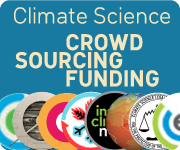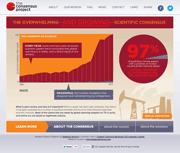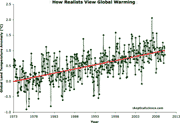Fact brief - Is methane the largest driver of recent global warming?
Posted on 8 February 2025 by Guest Author
![]() Skeptical Science is partnering with Gigafact to produce fact briefs — bite-sized fact checks of trending claims. This fact brief was written by Sue Bin Park from the Gigafact team in collaboration with members from our team. You can submit claims you think need checking via the tipline.
Skeptical Science is partnering with Gigafact to produce fact briefs — bite-sized fact checks of trending claims. This fact brief was written by Sue Bin Park from the Gigafact team in collaboration with members from our team. You can submit claims you think need checking via the tipline.
Is methane the largest driver of recent global warming?
 Methane only accounts for 20-30% of recent warming, while human-made CO2 remains the dominant driver of recent climate change.
Methane only accounts for 20-30% of recent warming, while human-made CO2 remains the dominant driver of recent climate change.
Methane is a potent greenhouse gas significantly more effective at trapping heat than CO2; however, there is approximately 220 times more CO2 than methane in our atmosphere. Methane is also significantly shorter-lived, with an atmospheric lifetime of around a decade in comparison to CO2 lasting for centuries.
Human activity contributes over two-thirds of methane emissions, mainly via agriculture and livestock, fossil fuel extraction, and landfills. Methane levels have risen 2.7 times above pre-industrial levels.
Large amounts of methane are also trapped in permafrost. As permafrost thaws in rising temperatures, the released methane’s greenhouse effect creates a feedback loop that melts more permafrost and further accelerates warming.
While methane plays a role in global warming, CO2 remains the primary driver of current climate change.
Go to full rebuttal on Skeptical Science or to the fact brief on Gigafact
This fact brief is responsive to quotes such as the one highlighted here.
Sources
International Energy Agency Methane and Climate Change
NASA Methane
Copernicus Greenhouse gas concentrations
The Salata Institute at Harvard University Thawing permafrost: what does it mean? And what can be done?
About fact briefs published on Gigafact
Fact briefs are short, credibly sourced summaries that offer “yes/no” answers in response to claims found online. They rely on publicly available, often primary source data and documents. Fact briefs are created by contributors to Gigafact — a nonprofit project looking to expand participation in fact-checking and protect the democratic process. See all of our published fact briefs here.































 Arguments
Arguments
































Comments